Saturday’s Shoutout / MidCurrent, Ask the Experts
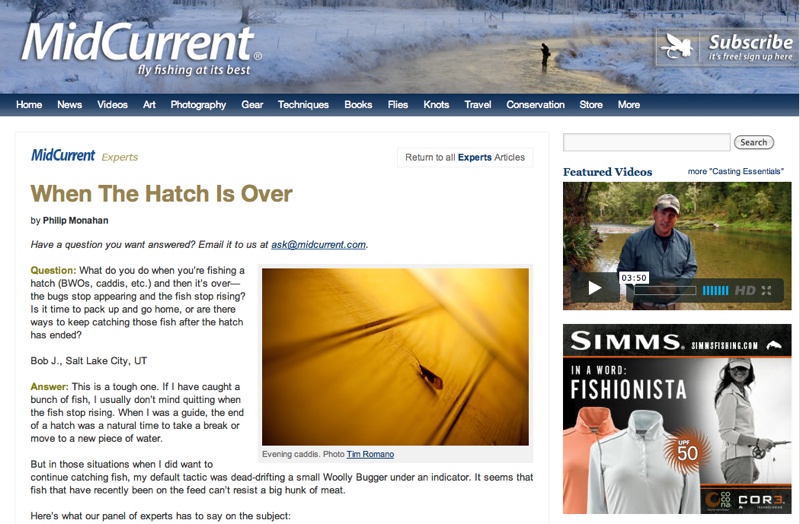
This weeks Saturday’s Shoutout goes to MidCurrent, for its Ask the Experts section. Anyone that surfs the web and also fly fishes has probably heard of Midcurrent. I try to visit the site at least once a week over a cup of coffee to read the latest content. It’s always well written and very informative. With hundreds upon hundreds of web pages dedicated to fly fishing on the MidCurrent website, it’s no doubt the Google of Fly Fishing. I personally enjoy the Ask the Experts section of the website, that takes questions from followers and is then answered by professionals in the industry. That’s information you can count on being accurate and worth your time to read, and we encourage you to check out. Kent Klewein Gink & Gasoline www.ginkandgasoline.com hookups@ginkandgasoline.com Sign Up For Our Weekly Newsletter!
Read More »The Scott F2, Better Than Sex?
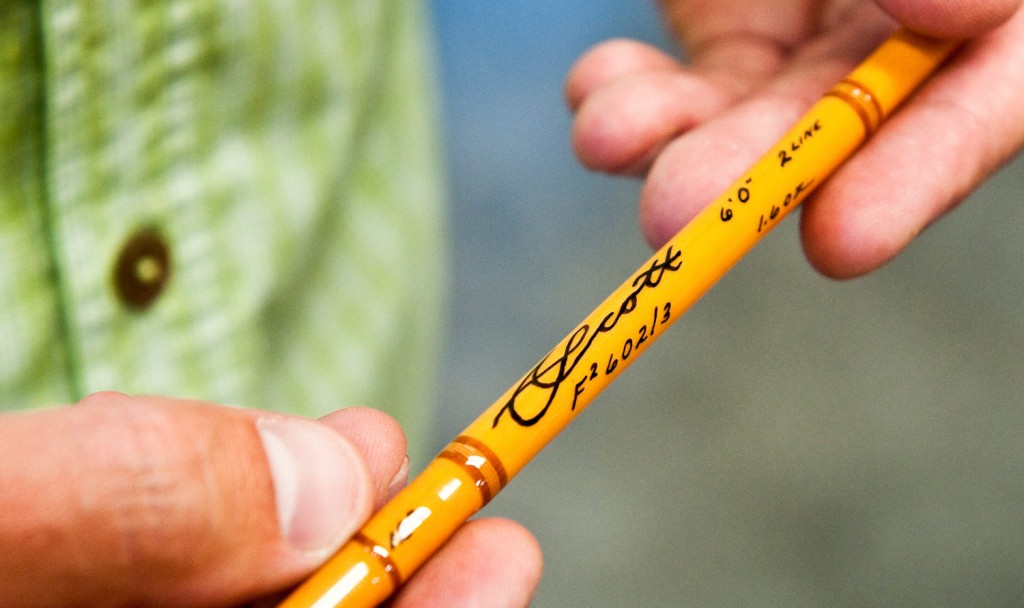
Years ago I acquired an old fiberglass rod that had belonged to my Grandfather. I don’t know why he owned that rod. It was a miserable stick. I fished it a few times and pretty much wrote off fiberglass all together. That is until a friend put a Scott F2 in my hand. WOW! Ok, now I get it. What a beautiful little rod, both to look at and to cast. The rod I cast was a seven foot three weight. It was truly unique. I’ve heard fiberglass compared to bamboo but I think it’s very different. To be sure, fiberglass is slow. Even slower than some of my favorite bamboo rods but the feel is different. The F2 has a buttery parabolic action that seems to cast it’s self. It will literally cast the leader. If you do much small stream fishing you know how important that can be. That’s not the end of it. The F2 is just as happy pushing out fifty feet of line. I’d hate to have to do it in wind, but there on the casting pond at IFTD it was quite easy. It’s not the rod for every day but a rod that you will look for an excuse to fish. I can see myself fishing this rod on small brookie streams here in the southeast or on winding cutthroat rivers out west. It would be great on spring creeks or anywhere a delicate presentation is important. Any small to medium size water where you will have good dry fly action is a great place for an F2. I own several Scott rods and love them all, so when Jim Bartschi invited me to come by the shop, I jumped at the chance. I got to see every phase of the production … Continue reading
Read More »Gobble Gobble – Turkey’s Multiple Uses In Fly Tying
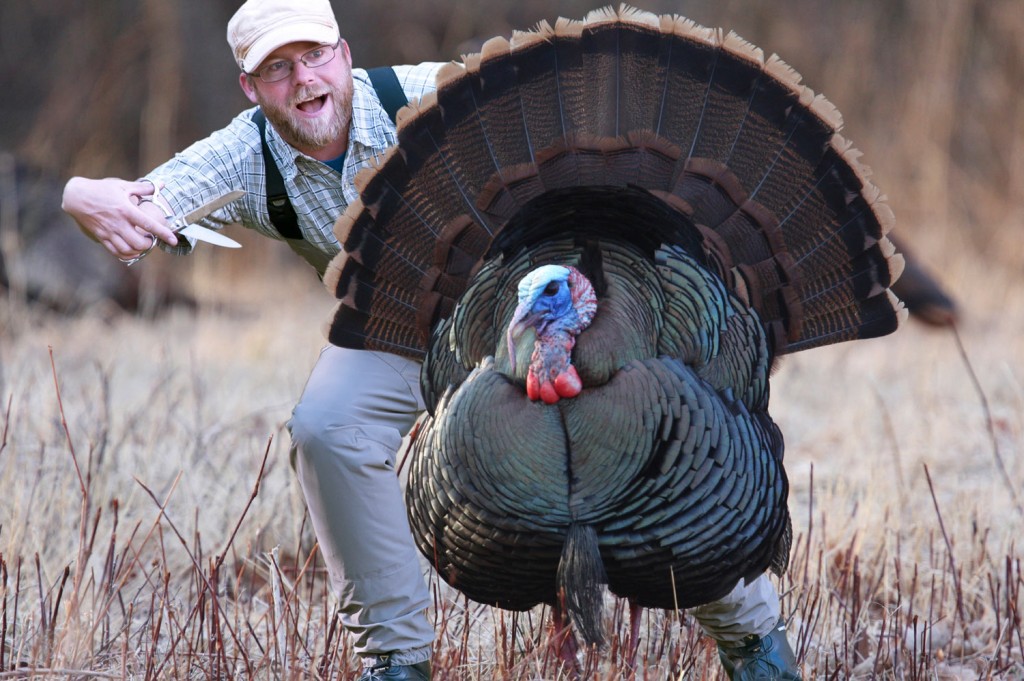
Do you ever find yourself wanting to pull of the road to snip off some feathers when you see one of these guys? I know it would never work, but it still doesn’t stop me from finding myself wanting to try. Turkey feathers have been used in fly tying since the very beginning, and many of our popular fly patterns today still incorporate turkey feathers in their tying recipes. Turkey tails work great for tying wings in many of our dry flies. It also works equally well for tying wing pads and shellbacks in thorax’s of our nymphs. I love to use the two toned turkey under feathers (basically marabou) for tails in my nymphs and woolly buggers. Dig in deeper and I think you’ll find several other useful situations where turkey feathers will serve you well in your fly tying fresh or saltwater. G & G Tip: Find a buddy that turkey hunts but doesn’t fly fish. You’ll be able to get your hands on all the turkey feathers you can cram into your fly tying bins. Happy Thanksgiving from Gink & Gasoline Kent Klewein Gink & Gasoline www.ginkandgasoline.com hookups@ginkandgasoline.com Sign Up For Our Weekly Newsletter!
Read More »Sunday Classic / Spooky Permit Tips
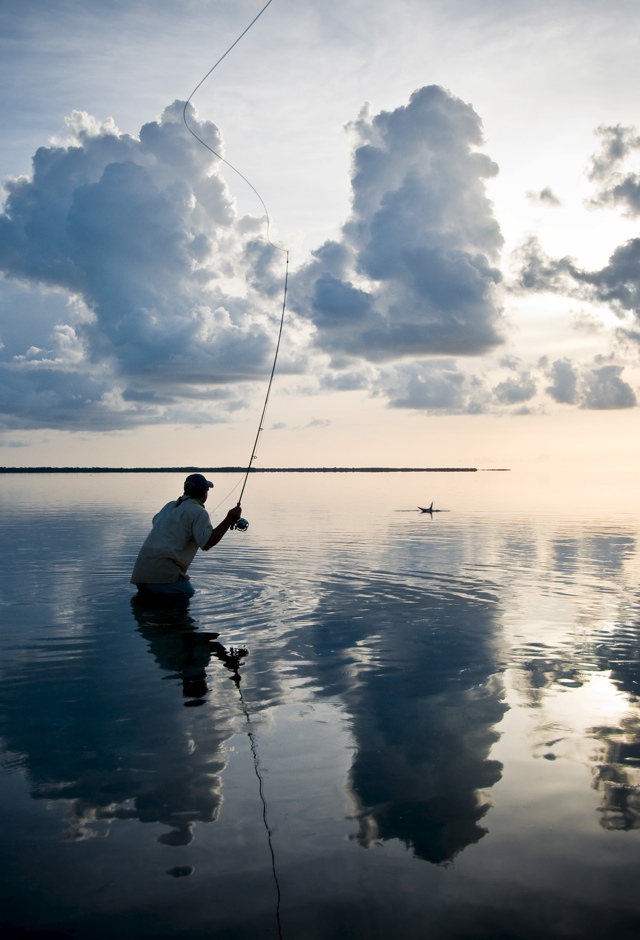
Permit in glass calm water. It doesn’t get any tougher than that. I know of no one who know more about permit than my buddy Bruce Chard so I ask him for a tip on making a successful presentation. Here’s his reply. Casting to shallow water permit in calm wind conditions can be challenging to say the least. These are the two main conditions that seem to make permit even more skidish than normal. Is that even possible? Shallow water depth and calm wind conditions help to put permit on another level of the spooky scale. So how do we effectively cast to these shallow water feeding circus fatties? Well an even powered wide loop presentation is a good start believe it or not. An even powered wide loop presentation cast will help to spread all the energy in the fly line evenly over the wide loop leaving just enough dispersed energy to slowly and softly roll out the leader and fly with a quiet presentation. This helps you to present your fly right in the permits wheel house and that means game on! Thanks Bruce! Louis Cahill Gink & Gasoline www.ginkandgasoline.com hookups@ginkandgasoline.com Sign Up For Our Weekly Newsletter!
Read More »Saturday’s Shoutout / Fly Fishing Internet Radio

This Saturday’s Shoutout goes to Roger Maves, Host of Ask About Fly Fishing – Internet Radio. Roger has produced 134 fly fishing information packed interviews with the top fly fishing experts in the industry. This sites is great for two reasons. One, it’s completely FREE for you to listen to, and second, it’s great for picking up tips from the pros and learning the ins and out of their home waters. We give Roger Maves an A+ for his great content and a big Cheers to all his contributors. Keep it Reel, Kent Klewein Gink & Gasoline www.ginkandgasoline.com hookups@ginkandgasoline.com
Read More »Landlocked Stripers on the Fly
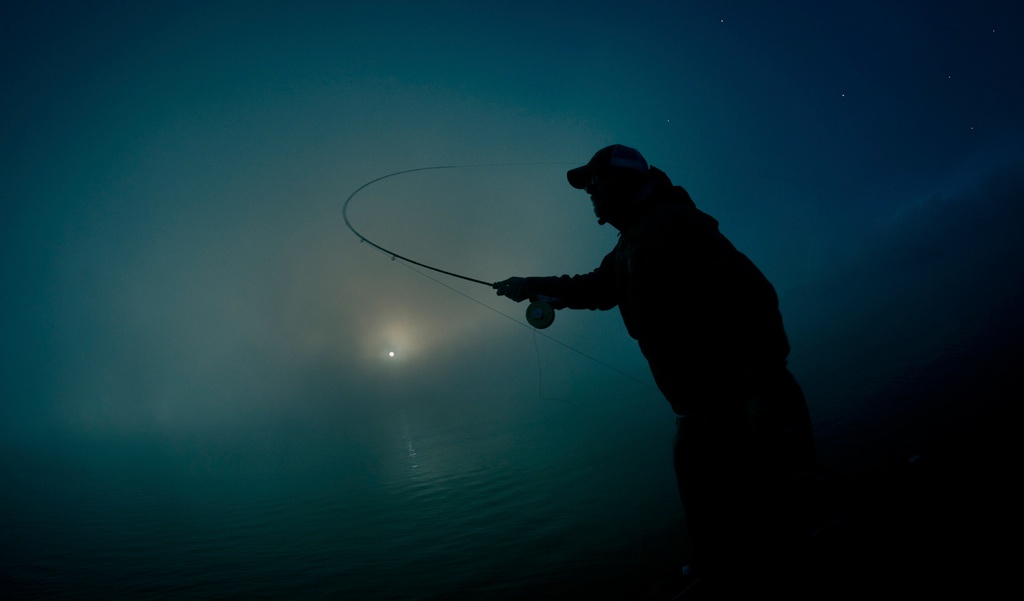
WHEN THE WEATHER TURNS COOL, IT’S TIME TO GET EXCITED ABOUT LAYERING UP AND GETTING ON ONE OF MY LOCAL RESERVOIRS FOR SOME LANDLOCKED STRIPERS ON THE FLY.
The fall and winter months are great times for both numbers and big fish if you’re willing to battle the cold. Dropping water temperatures get baitfish schooling up and very active, and you’ll find schools of hybrid bass and striped bass following their every move. It sounds easy right? Tell me that again when the alarm clock is ringing at 4:00am and it’s twenty degrees outside.
For best results you’re going to want to get on the lake early, well before sunrise. You will find your best opportunity for breaking fish is the first three or four hours of the day. Once the sun gets high on the horizon the baitfish and the striped bass usually go deep. Even with full sinking lines you’ll find it hard to effectively present your fly in the strike zone when fish are deep. Long points close to deep water or flats and humps surrounded by deep water are hotspots for stripers and hybrid bass driving and abusing baitfish. Sometimes stripers will also use the backs of coves to trap baitfish so don’t overlook those as well. If you’re not seeing any breaking fish or activity on your electronics your best bet is to run the lake looking for surface activity.
Pay attention to any birds circling in the air as well, they’re after the baitfish also, and can often give you a clue to where the concentrations of stripers are located. You’ll also want to
Read More »Sunday Classic / Casting for Distance

Saltwater fly fishing often calls for long accurate casts for the chance of success, and quite often it holds just as true on your favorite trout streams. Of the countless hours I’ve spent guiding my trout clients the past ten years, I’ve witnessed over and over again, how important just a couple more feet of distance can be in getting a trout to eat. You just can’t always approach a hole and make a routine short cast. Often no matter how stealthy you are, you’ll spook the fish if you try getting closer. Occasionally, obstacles such as low hanging trees can make it impossible to get the proper casting angle unless your standing farther away. Other times you may run into a situation where different current speeds between you and your target require a longer cast to get an adequate drag free drift. That’s why it’s so important for fly anglers to get comfortable making above average casts. I’m not saying you have to be able to bomb out eighty feet of line, or that you’ll have to make super long casts all the time either. I’m just saying, there are times when you won’t be fishing that angler friendly pocket water that just calls for short roll casts and quick high-stick drifts. You need to be prepared to make longer casts when the need arises. Believe it or not, quite often trout will follow your flies down stream a good ways before deciding to eat. If your fly gets too close to you the trout will often see you and won’t eat. Making a longer presentation will provide that buffer zone for the trout to inspect and eat without seeing you. Remember that trout don’t have eyes in the back of their head as well. If you don’t get … Continue reading
Read More »Saturday Shoutout / Fly Tying Hook Up

Hatches Magazine Hatches fly tying magazine is only sent out annually, but what’s really cool is there regular newsletter I receive packed with tons of fly tying content. Even better is it’s large archive of fly patterns that show you step by step instructions on how to tie them up. Big tiers in the industry submit fly patterns to them and you’ll find lots of unique fly patterns for all species. Kent Klewein Gink & Gasoline www.ginkandgasoline.com hookups@ginkandgasoline.com Sign Up For Our Weekly Newsletter!
Read More »Are Gold Beads Out or Is it just all in our heads?
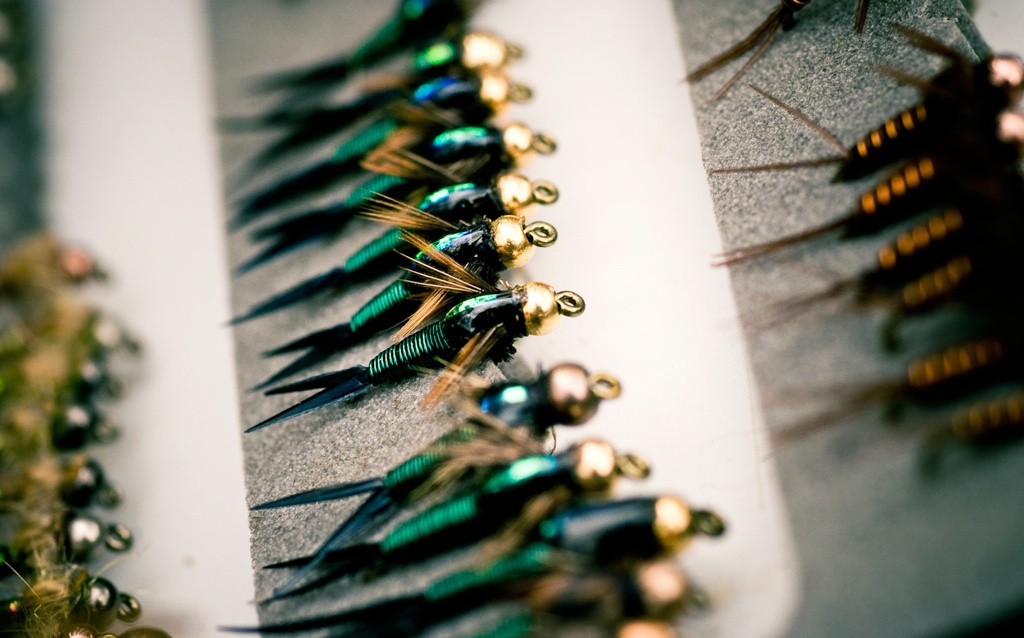
When I first started guiding for trout it seemed like every nymph in the fly bin had a gold bead on it. Everyone caught fish on them and you didn’t hear of anyone back then shying away from using them. So why do I find myself so reluctant to use them on the water these days? For some reason they don’t seem to work as good for me anymore. Maybe the trout have caught on from everybody using them, or it’s worked its way into their DNA as being a negative trait. More than likely it’s just the fact that there’s so many different colored bead options available to fly fishermen nowadays. Whatever it is, I’ve got a serious confidence issue with gold beads that keep them staying high and dry in my fly box. What’s your take on gold beads? Kent Klewein Gink & Gasoline www.ginkandgasoline.com hookups@ginkandgasoline.com Sign Up For Our Weekly Newsletter!
Read More »Sunday Classic / Lionfish – Hell on the Ecosystem

Lionfish may be the mother of all invasive species. Take a moment to think about this: a lionfish (native to the Indo-Pacific) has no natural predators in the Atlantic ocean. It can live up to fifteen years, reaching sexual maturity in less than a year. Once mature, a pair can spawn as often as every four days. A single mature female can produce up to two million eggs per year and they will tolerate a population density of two hundred adults per acre. Just the math involved scares me, but you don’t even have to get out the calculator to see where this is going. Introduced in several locations in Florida as a result of aquarium damage during hurricane Andrew, lionfish have been making their way around the Caribbean and east coast of the US for the past twelve years, but in the last three years the population has exploded. They are now found as far north as North Carolina and south into South America. They are rampant in the Bahamas as well as the Florida Keys and are now common in the Florida panhandle. Why am I so worried about this beautiful tropical fish? Here are a few more fun lionfish facts.
Read More »